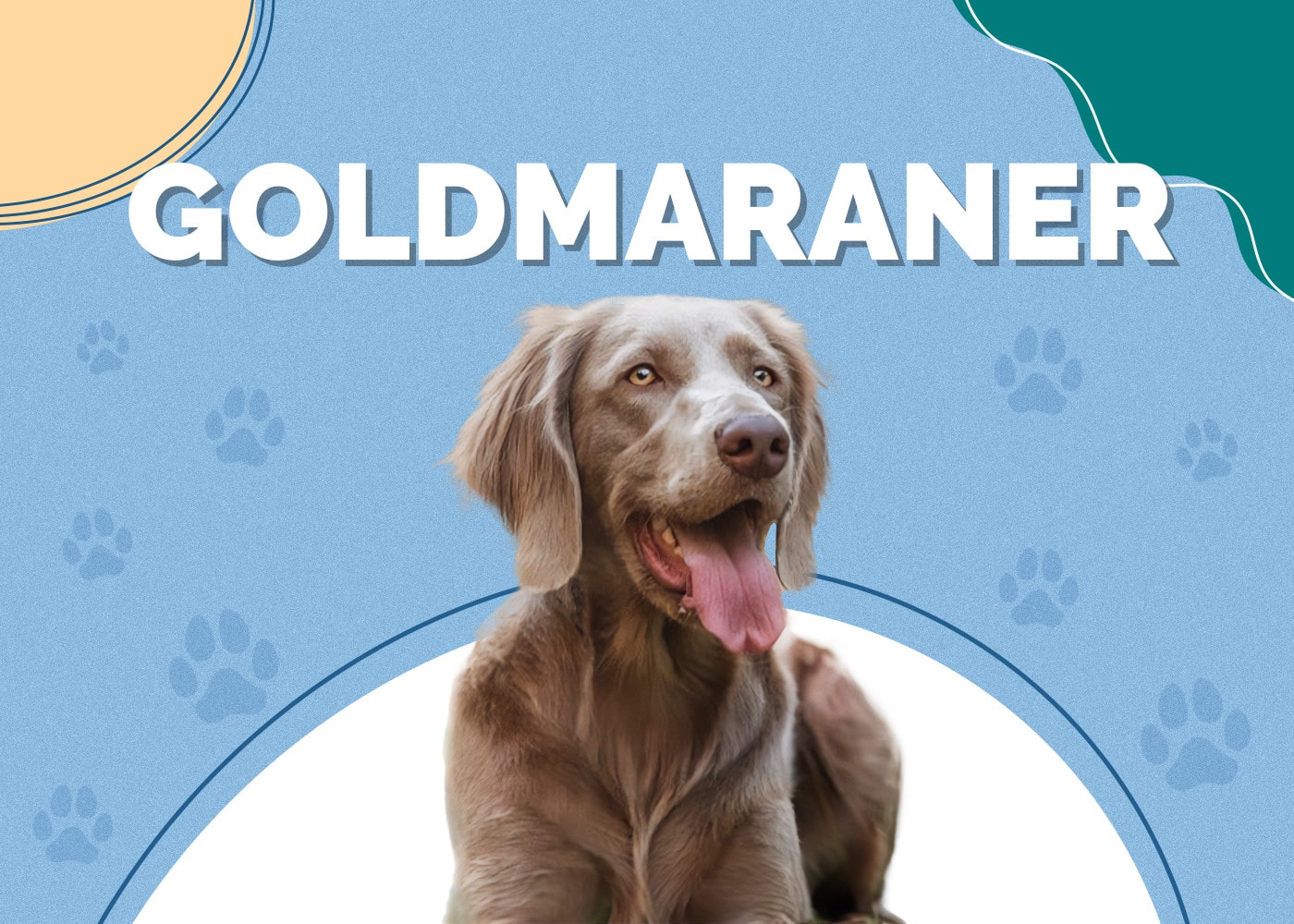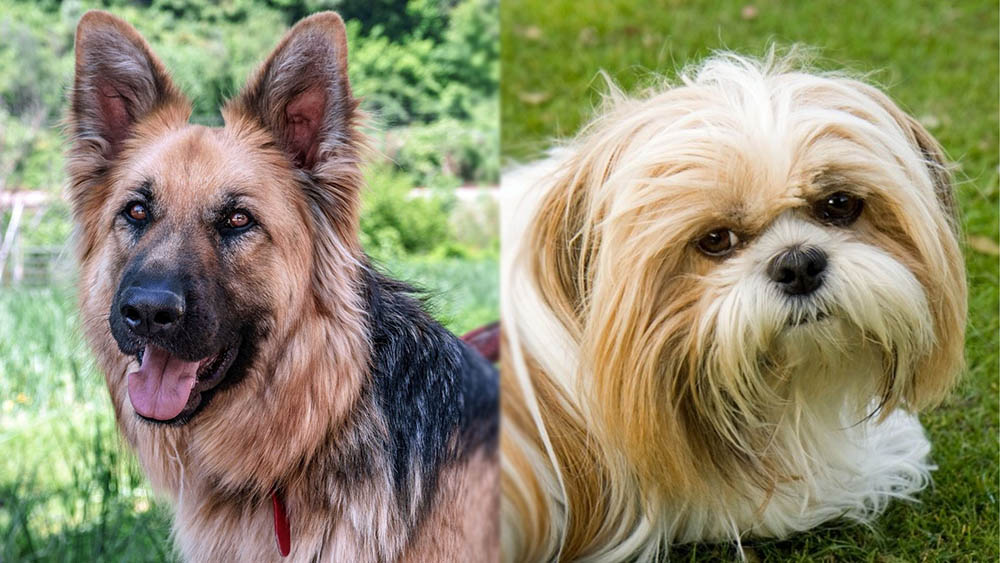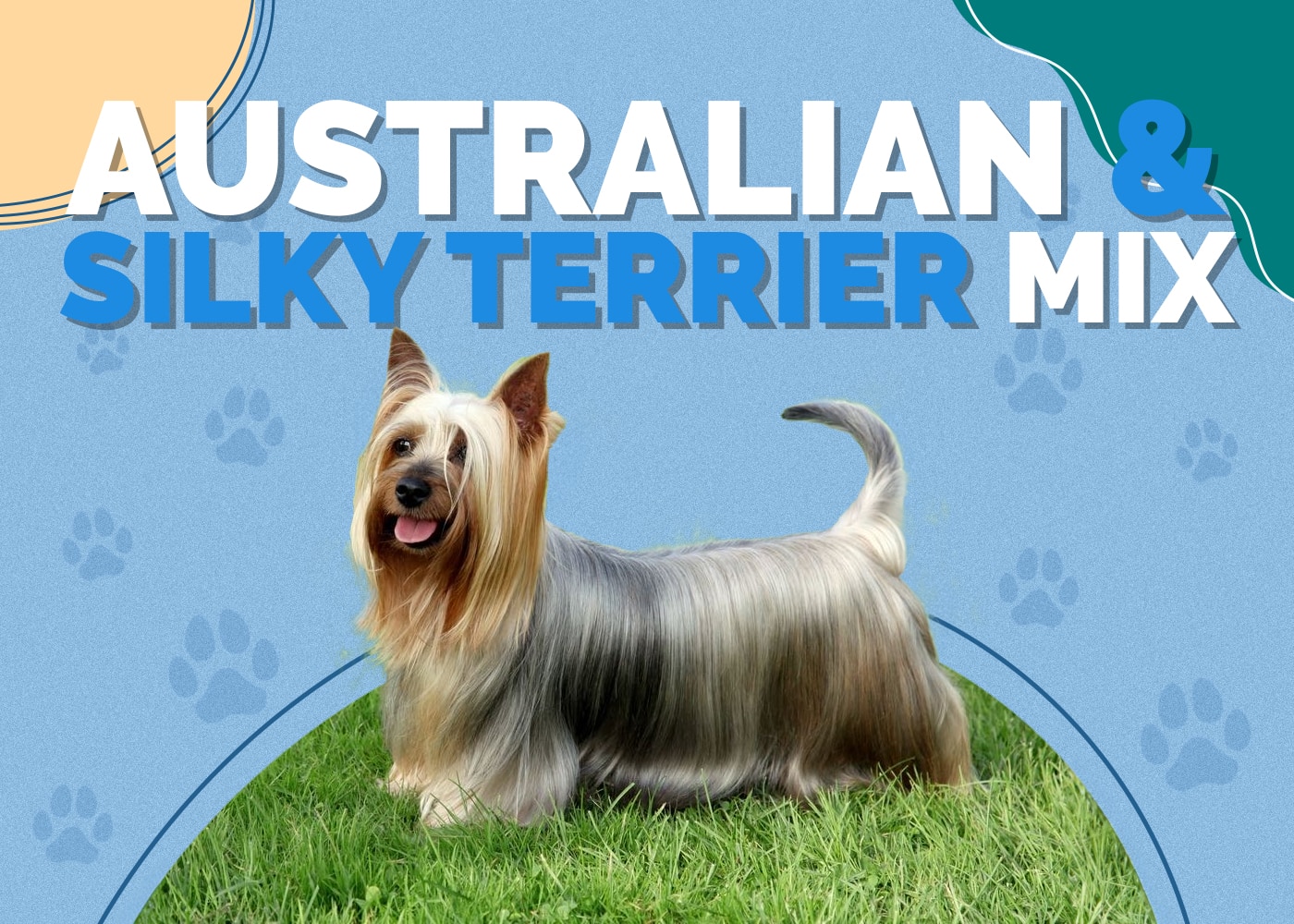Australian Cattle Dog | Breed Info: Pictures, Traits & Facts

Updated on
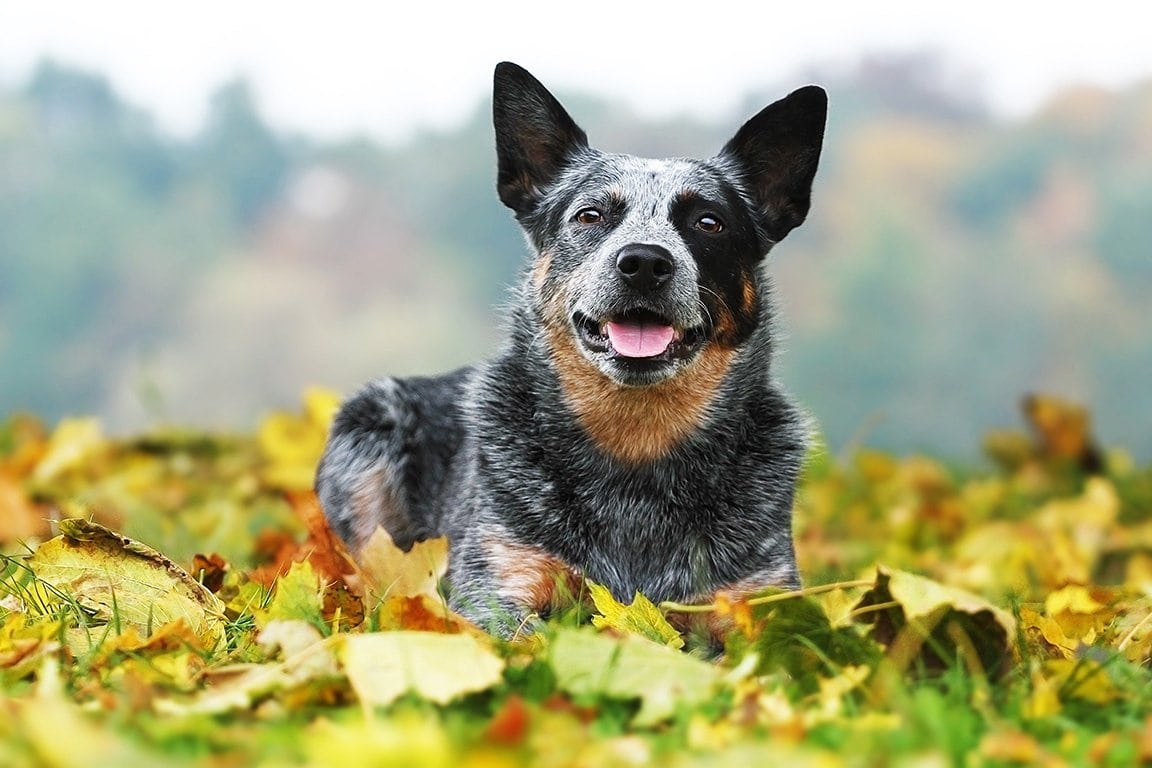
Height:
17-20 inches
Weight:
35-50 pounds
Lifespan:
12-16 years
Colors:
Red, blue, white, black, grey
Suitable for:
Active families, farmers, runners
Temperament:
Loyal, fearless, protective, mischievous, athletic, energetic
Few breeds of dogs are as loyal as the Australian Cattle Dog. These dogs bond with their family for life, building strong ties that are never broken. They are fearless with a natural tendency to protect their loved ones. And when they show their defensive stance, these dogs can be quite intimidating.
Bred for hard work herding cattle on the farms, the Australian Cattle Dog is as athletic as canines get. They have boundless energy and unending endurance that allows them to work all day without tiring. For dogs working on the farm, this is a blessing. But for the Australian Cattle Dogs that become companion pets, that energy will need a daily outlet.
These dogs are happiest when they’re given a task or job to complete. Their high levels of intelligence mean they can quickly pick up new activities with ease. It also means that boredom comes quickly to these pooches if they’re left alone without any constructive tasks for too long.
You’ll need to provide an outlet for all the excess energy each day. Because of this, these dogs are perfect for runners, hikers, or any other distance athletes that are making miles each day.
Australian Cattle Dog Puppies
Australian Cattle Dogs are pretty popular as pets, ranking number 55 out of the AKC’s 196 accepted breeds. But these dogs weren’t created with the intention to be used as companions. Instead, these dogs were built to work long days herding livestock in the sweltering heat of the Australian outback. So, even though they make excellent pets, their pricing is often dictated by their usefulness as working dogs.
These dogs will need at least an hour or two of exercise each day. A great way to provide enough exercise for your Australian Cattle Dog is to take them on runs or hikes with you. If you’re an athlete that’s going out on long-distance excursions regularly, then you’ll be a great fit for an Australian Cattle Dog. They’ll love to accompany you every time and they’ll probably be able to go even farther than you!
But even when you’re not exercising them, these dogs need an outlet for their energy since those energy levels never seem to deplete on their own. That means that these dogs need big yards to roam around. They don’t do well in small spaces like apartments and townhomes.
3 Little-Known Facts About the Australian Cattle Dog
1. An Australian Cattle Dog is Featured in Mad Max
Australia isn’t a terribly large country, and the Australian Cattle Dog may have gone relatively unnoticed in the rest of the world if it weren’t for a single star from the breed. This breed was catapulted into fame when one starred alongside Mel Gibson in the Road Warrior movies as his lone partner in the dystopian Australian wasteland. And the movie did a great job of capturing the deep-rooted loyalty that all Australian Cattle Dogs have for their family.
2. There are Two Types of Australian Cattle Dogs
If you’ve looked at many pictures of Australian Cattle Dogs or you’ve met a few, then you might have realized that there are two very distinctly different looking types of Australian Cattle Dogs. Technically, they’re the same breed and the differences are mostly just related to color. But they look so different that they even have distinct names. Blue Heelers refer to the blue and gray Australian Cattle Dogs that you see most often. This is the same type that starred in Mad Max. But there’s also a red-coated version that looks a lot more like the Dingo; the Red Heeler. Temperamentally, these dogs are the same, but physically, they look quite distinct.
3. Australian Cattle Dogs are Part Dingo
They needed some strong, hardy dogs for herding in the rugged Australian outback. The English Sheepdog breeds that were being used for herding purposes in most places at the time simply didn’t have the stamina, endurance, and hardiness to survive the brutal desert conditions. So, they crossed a sheepherding dog, a Blue Merle Smooth Highland Collie, with the closest-related local that would provide the needed endurance and resilience to work in the Australian climate. That local was the Dingo, a wild dog that’s descended from Asian Dingoes first introduced to the continent thousands of years ago.
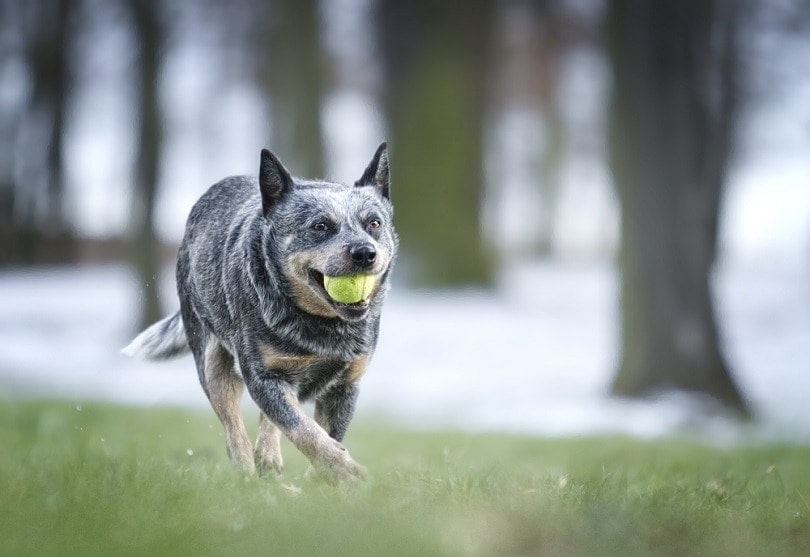
Temperament & Intelligence of the Australian Cattle Dog🧠
Australian Cattle Dogs are highly energetic yet easy-going at the same time. They’re not demanding and have an independent streak that allows them to keep themselves entertained for quite some time. Still, this is a dog with some serious intelligence and boredom is a real factor to consider. When an Australian Cattle Dog gets bored, destructive behaviors are likely to follow.
These dogs do best when given some task or job to complete. They excel at many dog sports and competitions thanks to their innate intelligence and exceptional athleticism. Obedience training also does well with these dogs and provides the type of mental stimulation that they need.
Moreover, this breed is incredibly loyal. Once you bond with an Australian Cattle Dog, that bond is for life. These dogs will kill and die for their family without even giving it a second thought. They have a natural protective instinct that makes them great guard dogs.
Are These Dogs Good for Families?🏡
Australian Cattle Dogs are very pack oriented. This is likely due to the Dingo in their blood since Dingoes are pack animals. Because of this, Australian Cattle Dogs fit perfectly in families. They can bond closely with each family member and don’t have any of the jealousy that some other breeds display.
Remember that these dogs are herding animals. They have a natural tendency to herd more than just cattle though. If you have kids, don’t be surprised if you see your Australian Cattle Dog attempting to herd the children and keep them in the yard!
Because of their herding instincts, these dogs do tend to be mouthy. They like to nip and gently mouth; traits that can be trained out if you so desire. But you’ll likely see your Australian Cattle Dog nipping at the childrens’ feet to keep them where it feels is safest.
But these dogs also form very strong partnerships with children that they’re raised with. Though they may attempt to herd the little ones, any kids raised with your Australian Cattle Dog will become life-long best friends. Your dog will accompany them on many adventures, never leaving their side. This is when their loyalty is most obvious.

Does This Breed Get Along with Other Pets?🐶 😽
That same herding instinct is also likely to display itself with other pets. If you have other dogs, your Australian Cattle Dog may attempt to herd them and keep them together in a group. This applies to other pets too, not just dogs. You’ll likely see the same behavior with cats, horses, or any other animals that you keep alongside your Australian Cattle Dog.
Despite the herding, these dogs seem to get along with just about everyone. They do have a bit of a prey drive, but it tends to only show when small creatures are around. Still, with proper socialization, you can prevent the prey drive from showing up at all.
Things to Know When Owning an Australian Cattle Dog:
Food & Diet Requirements🦴
These dogs are extremely active and have tons of energy to expend. However, they’re not very large dogs, rarely even reaching 50 pounds. As such, they don’t eat excessive amounts of food. But because they’re so active and energetic, Australian Cattle Dogs do best on high-quality dog food that’s specifically formulated for active dogs. These blends will provide the necessary nutrients that your dog is burning with all of that running around and playtime.
You can opt to feed your dog dry or wet food, as long as they’re getting plenty of calories and nutrients. Dry food tends to be more cost-effective, especially with such an active breed.
Alternatively, you can also choose to feed your Australian Cattle Dog a whole-food diet. These dogs do well on such food regimens, though it takes a lot more effort on your part and it can get quite expensive to feed your dog the same foods you’re eating.
Also, look for dog foods that are fortified with supplements intended to keep joints healthy as your dog ages. Australian Cattle Dogs aren’t susceptible to many health concerns, but they have been known to develop some joint problems like dysplasia. By feeding your dog a food that’s fortified with supplements like glucosamine and chondroitin, you can help to ensure that their joints stay healthy and strong as your dog gets older.
Exercise🐕
For the most part, Australian Cattle Dogs are relatively low-maintenance dogs. However, the exception is when it comes to physical activity. These dogs are incredibly active and have endless endurance and energy. This was necessary when these dogs were used exclusively as herding animals that were expected to work all day long every day in the ruthless heat of the Australian outback. But today, in your backyard, your Australian Cattle Dog doesn’t have the same type of all-day work available to help curb that excess energy.
So, it’s up to you to provide plenty of physical activity for your Australian Cattle Dog. For this reason, these dogs are best suited for highly active individuals and families.
In truth, you almost can’t overwork these dogs. No matter how much exercising you do, your Australian Cattle Dog can probably do more, so these dogs are the best match for people who are already out being active all the time and just need a four-legged partner to accompany you.
Training🦮
These dogs were bred to work and they have all the traits necessary for it. They’re incredibly intelligent, hard-working, and they want to please their owner. All of this combines to make the Australian Cattle Dog a very trainable canine. In fact, many would say they’re a pleasure to train. But you have to have a firm hand. These dogs have a bit of an independent streak that will display itself for all to see if you show any weakness.
Training is great for an Australian Cattle Dog because it provides the kind of mental stimulation that these smart dogs need to prevent boredom. It’s a great way to give them tasks to perform and help release some of that excess energy while also strengthening your bond.
Most Australian Cattle Dogs do great with all types of training. You can even get these dogs to learn many commands, tricks, and more since they’re smart enough to generally understand what’s being asked of them.
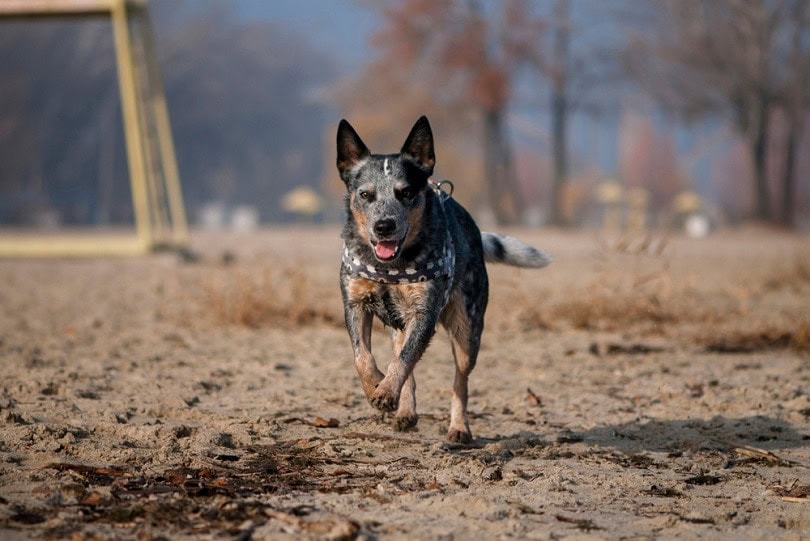
Grooming ✂️
Australian Cattle Dogs shed year-round. They don’t shed heavily for most of the year, but twice a year they completely blow their coats and you should expect to have mountains of loose hair accumulating in the corners of your home.
Overall, these dogs are relatively low maintenance. They don’t require much grooming at all. Even when they’re shedding heaviest, a light brushing once or twice a week should be sufficient to prevent the dead hair from matting.
Like with all dogs, you’ll want to keep a close eye on your Australian Cattle Dogs nails and teeth. Nails will need regular trimming to prevent them from growing too long. Teeth will also need regular cleaning. But aside from the standard grooming, these dogs don’t require anything special. They rarely even need baths!
Health and Conditions❤️
Australian Cattle Dogs are quite hardy. They’re a rugged breed that was built to work in some of the roughest conditions on earth. So, it’s not too surprising that there aren’t many health conditions that affect this breed. However, as with most breeds, there are a few possible concerns that are best to keep an eye out for. They’re not common in the breed, but they do pop up on occasion, so they warrant mentioning.
- Lens Luxation
- Progressive Retinal Atrophy
- Arthritis
- Hip Dysplasia
- Elbow Dysplasia
Serious Conditions:
Hip Dysplasia: This is one of the most common conditions that affect dogs, though it is most common in larger breeds. Hip dysplasia is when the hip and femur form incorrectly. The result is that the femur doesn’t fit properly inside of the hip socket. This causes the bones to rub together, which can produce pain, limit movement, and generally reduce a dog’s quality of life.
Elbow Dysplasia: Canine elbow dysplasia is an umbrella term for abnormalities involving the elbow. The elbow joint is comprised of three bones. When they don’t fit together properly, it causes incorrect weight distribution. This can result in pain, lameness, and eventually, arthritis in the affected joint.
Minor Conditions:
Lens Luxation: You can think of lens luxation as lens instability. This is when the lens of the eye is fully dislocated from the patellar fossa. This happens when the support ligaments that hold the lens in place weaken or break.
Progressive Retinal Atrophy: Progressive Retinal Atrophy, or PRA for short, is a wasting of the photoreceptor cells in the eye. Eventually, once the cells degrade enough, this will result in blindness for the affected dog. Unfortunately, there is no known cure.
Arthritis: Put simply, arthritis is a disease that causes inflammation and degeneration in the joints. It might affect one joint or more. It can cause pain, reduce movement, and can even cause behavioral changes in your dog such as sudden aggression.
Male vs Female
The differences between male and female Australian Cattle Dogs are minor but noticeable. When it comes to size, they’re pretty close, though males tend to be a little larger and heavier.
Temperamentally, females tend to be a bit more aggressive and territorial, though that’s not always the case. Males are often sweeter and a bit more friendly while females are sometimes more reserved and aloof. Of course, as with all creatures, there can be major behavioral differences between dogs of the same sex, so there’s no guarantee that any male or female Australian Cattle Dog will behave in a particular manner.
Final Thoughts
Hard-working, rugged, and utterly loyal, the Australian Cattle Dog is a unique and lovable canine. They were bred to work long days herding cattle under the scorching Australian sun, so they have endless energy and endurance and they’re incredibly intelligent. But they also make some of the best companions imaginable, so long as you can provide enough stimulation and physical activity to prevent them from getting bored.
These dogs are the best fit for very active individuals and families. Ideally, they’ll end up in a household of athletes who want to bring the dog on runs, hikes, and long adventures that will keep the dog happy and fulfilled. At the least, they require a big yard and some stimulating tasks to keep their energy levels at bay.
When you pick an Australian Cattle Dog, you’re choosing a partner with undying loyalty that will be by your side for life.
Featured Image Credit: Best dog photo, Shutterstock





